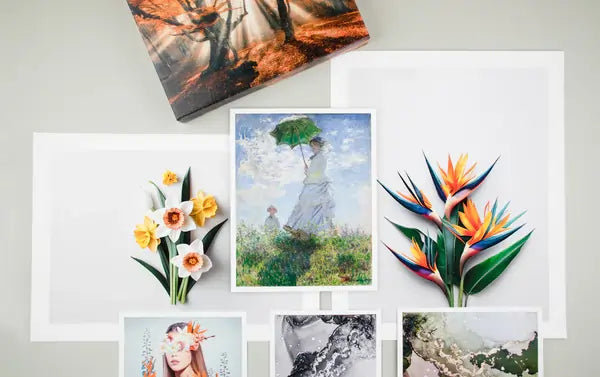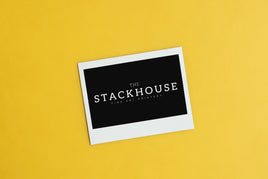TL;DR: QR codes are transforming museums and art galleries by connecting visitors with interactive, immersive experiences. From digital artist bios to augmented reality installations, they create deeper engagement and accessibility. Learn how galleries can implement them effectively while keeping print presentation professional with Stackhouse giclée prints.
Modern art experiences are becoming increasingly interactive. Museum and gallery visitors want to go beyond simply viewing artwork—they want to engage with it. One of the most powerful yet accessible ways to make that happen is by integrating QR codes into exhibitions. When used creatively, QR codes connect the physical and digital worlds, transforming traditional spaces into immersive storytelling environments.
What Are QR Codes?
QR codes, short for “Quick Response” codes, are scannable barcodes that store information such as links, text, or multimedia files. Visitors can simply open their smartphone camera, point it at the code, and instantly access additional content. This could be an artist video, an audio description, or even a 3D digital rendering of a sculpture. The flexibility of QR codes makes them a powerful addition to any modern exhibition.
How QR Codes Enhance the Museum and Gallery Experience
By adding QR codes next to artwork or printed signage, galleries can provide layers of information without cluttering the wall space. It keeps the visual presentation clean while giving visitors the choice to explore further on their own devices. The result is a balance of minimalist design and digital depth—something both curators and audiences appreciate.
Creative Ways to Use QR Codes in Art Spaces
1. Expand Artist and Artwork Information
QR codes can act as digital extensions of wall labels. Instead of squeezing long biographies or technical details onto small plaques, you can link to artist profiles, exhibition history, or videos that discuss the creation process. This approach keeps your display elegant while offering depth for those who want to learn more.
Some initiatives, like Bridge Bharat in India, have taken this even further. They embed artist bios, provenance details, and sales histories into scannable digital passports, ensuring creators remain connected to their works long after they’ve been sold.
2. Create Audio Tours
QR-coded audio tours replace bulky rented devices with seamless smartphone integration. Visitors can scan a code at each exhibit to hear narrations, interviews, or background stories. It’s also an accessibility win, offering alternatives for guests who prefer auditory learning or have vision impairments. This approach aligns with inclusive design principles encouraged by accessibility organizations like BOIA.
3. Provide Maps and Visitor Information
Galleries can reduce paper waste and improve navigation by linking QR codes to digital maps and exhibit directories. These interactive guides make it easy for visitors to find specific artworks, restrooms, or cafe areas while staying immersed in the experience. It also saves staff time by giving guests more self-guided tools.
4. Enable Instant Art Purchases
For commercial galleries, QR codes streamline the sales process. A simple scan can lead to a checkout page, payment form, or contact submission for inquiries. This allows interested patrons to purchase art directly without waiting for staff assistance, blending convenience with professionalism. Pairing QR-enabled purchase options with retail-ready prints can enhance sales efficiency while keeping presentation consistent.
5. Introduce Augmented Reality Experiences
QR codes are now opening the door to augmented reality (AR) exhibits. When scanned, visitors can view animations, digital sculptures, or interactive overlays on their phones. Artists like Robert Vargas have even used this technology to bring murals to life, allowing viewers to see motion or transformation through AR. This blend of technology and art keeps audiences engaged while offering unique storytelling possibilities.
How QR Codes and Printing Work Together
While QR codes bridge the gap between physical and digital experiences, their presentation still matters. For galleries and artists, having them printed cleanly on durable, archival media enhances professionalism and longevity. At The Stackhouse, we can produce mounted prints and signage that incorporate QR codes seamlessly into your display. This ensures your printed materials remain sharp, scannable, and visually consistent with your branding.
Final Thoughts
QR codes are more than a tech trend—they’re reshaping how art is experienced and shared. Whether used for education, accessibility, or sales, they create deeper engagement and extend the life of every exhibition. Combining them with professional printing elevates both function and presentation.
Ready to create gallery-quality signage or prints that integrate seamlessly with QR codes? Contact The Stackhouse to get expert help designing and printing your next exhibition materials.










